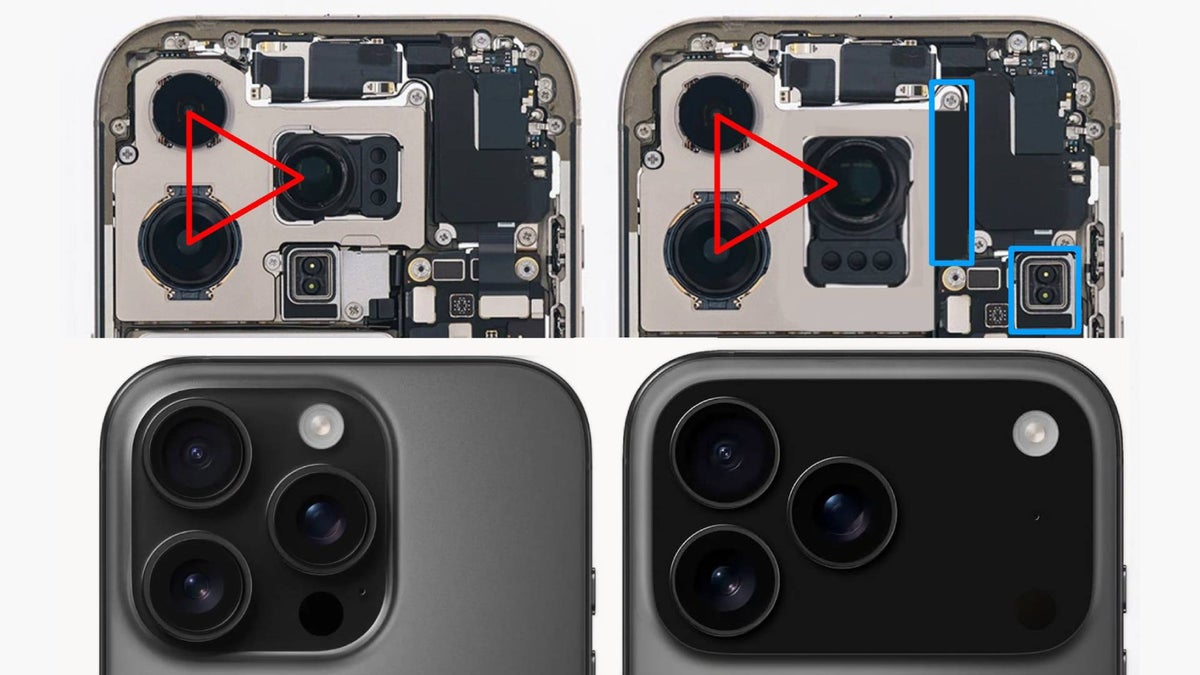Best telescopes for kids of every age for watching the planets and stars
Help children of all ages discover the marvels of the night sky with one of the best telescopes for kids
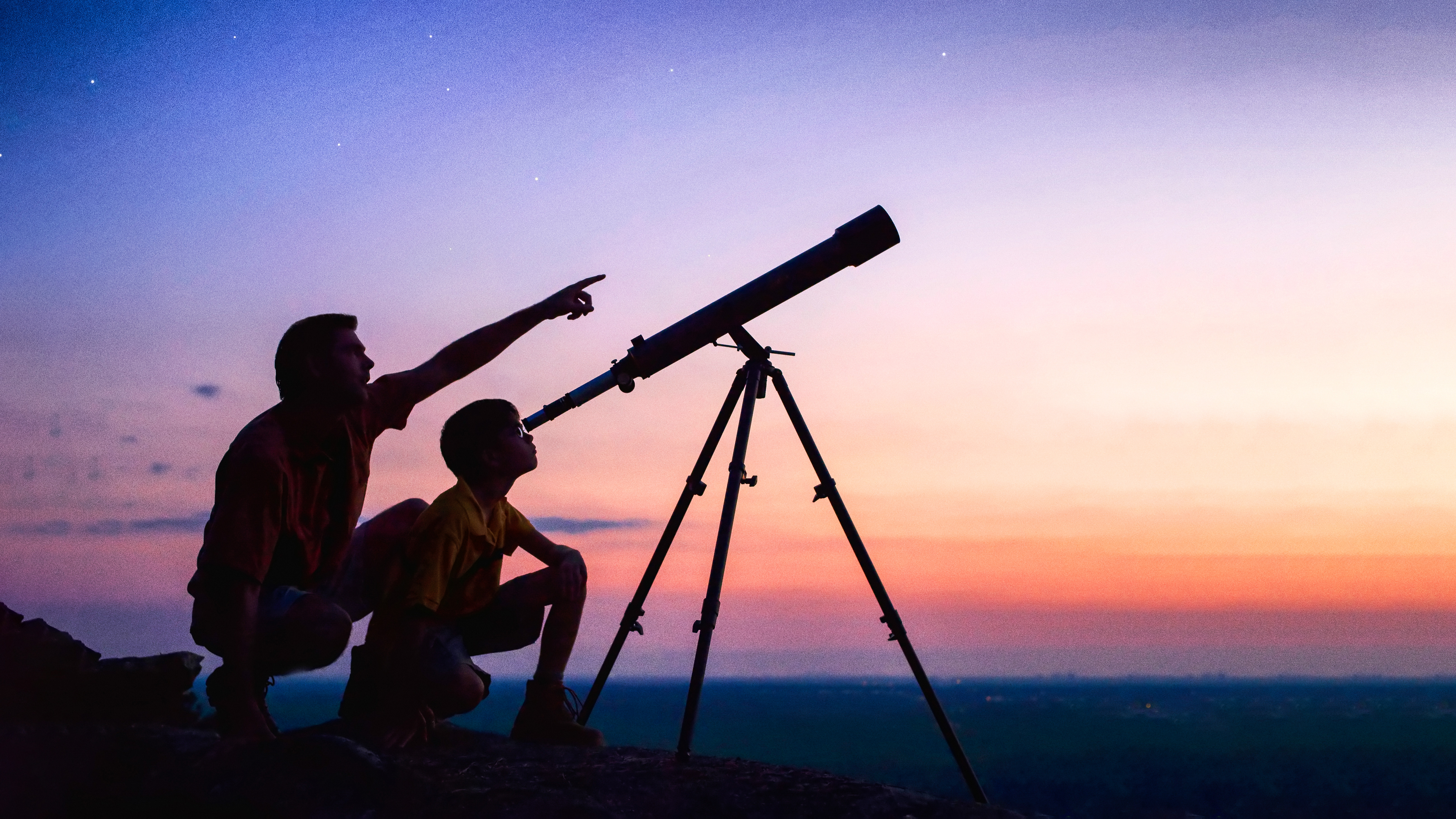
The night sky is a place of marvels, and there's no better time to discover it than when you’re a kid. Having a telescope in your back garden is a gateway to discovering the wonders of the heavens, from the cratered surface of the Moon or Saturn’s rings to distant galaxies and nebulae.
If you’re looking for a birthday or Christmas present that’s guaranteed to stimulate young minds, then a telescope makes a lot of sense and doesn’t have to be prohibitively expensive. Cheaper refracting and reflecting telescopes will provide exactly the same views as more expensive models, though may not come with as many bells and whistles such as computerized controls or camera mounts.
Telescopes can be broken down into two main types. There are refracting scopes that act a bit like long camera telephoto lenses, using glass to provide a magnified view. These can produce a very good picture, but tend to be low-powered unless you’re prepared to spend a lot of money. Then there are reflecting telescopes that use mirrors to bounce light up and down an optical tube. These instruments can provide more magnification for less expense, but are thicker and can be harder to use as they require collimation - the process of ensuring that the mirrors are lined up properly.
All telescopes require an eyepiece, and it’s the lenses in these that dictate the field of view you get. It may sound perverse to anyone used to camera lenses, but using a telescope eyepiece with a lower focal length (say, 9mm) gives you more magnification than one with a longer focal length (22mm, for example), but sometimes a wider field of view can be preferred, to take in the full majesty of sights like the Orion nebula or Andromeda galaxy. Telescopes’ resolving power is also limited by their aperture, just like with camera lenses. A larger scope will gather more light than a smaller one, allowing you to see fainter objects in the night sky.
Many of these telescopes, especially the refracting type, can be used during the day for wildlife spotting too. With that in mind, here are some of the best telescopes for kids to explore the night sky with.
The best telescopes for kids
Why you can trust Digital Camera World
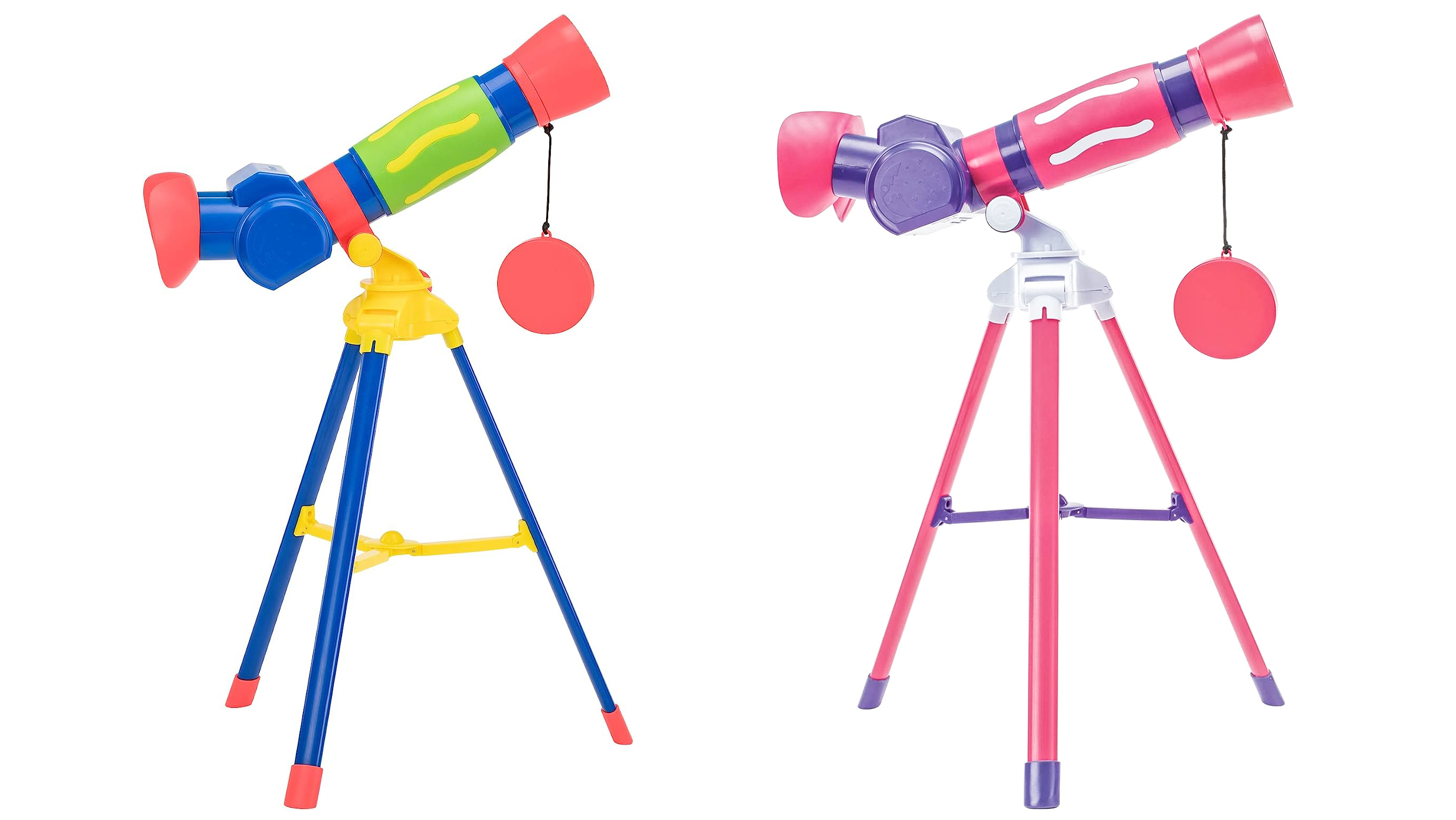
1: Educational Insights GeoSafari Jr. My First Kids Telescope
Specifications
Reasons to buy
Reasons to avoid
While the magnification and aperture may be low, and the plastic telescope itself looks like a toy, this small refractor telescope is fully functional. It comes with its own collapsible tripod, and is just the thing to get smaller children interested in looking up at the night sky - or even at the critters living at the bottom of your garden or while out camping.
The eyepiece has a binocular attachment with a rubber fitting that allows kids to use both eyes instead of having to learn how to close one – and there's a cut-out in just the right place to avoid squashing their nose. As a gateway to the joys of telescope use this makes a great gift for younger kids, but don’t be surprised if they’re soon bothering you for something a bit bigger.
Note that the same manufacturer makes a similar, but very different, Talking Telescope. This is also designed for children aged four and above, but is not actually a working telescope - instead you view images preloaded into the device.
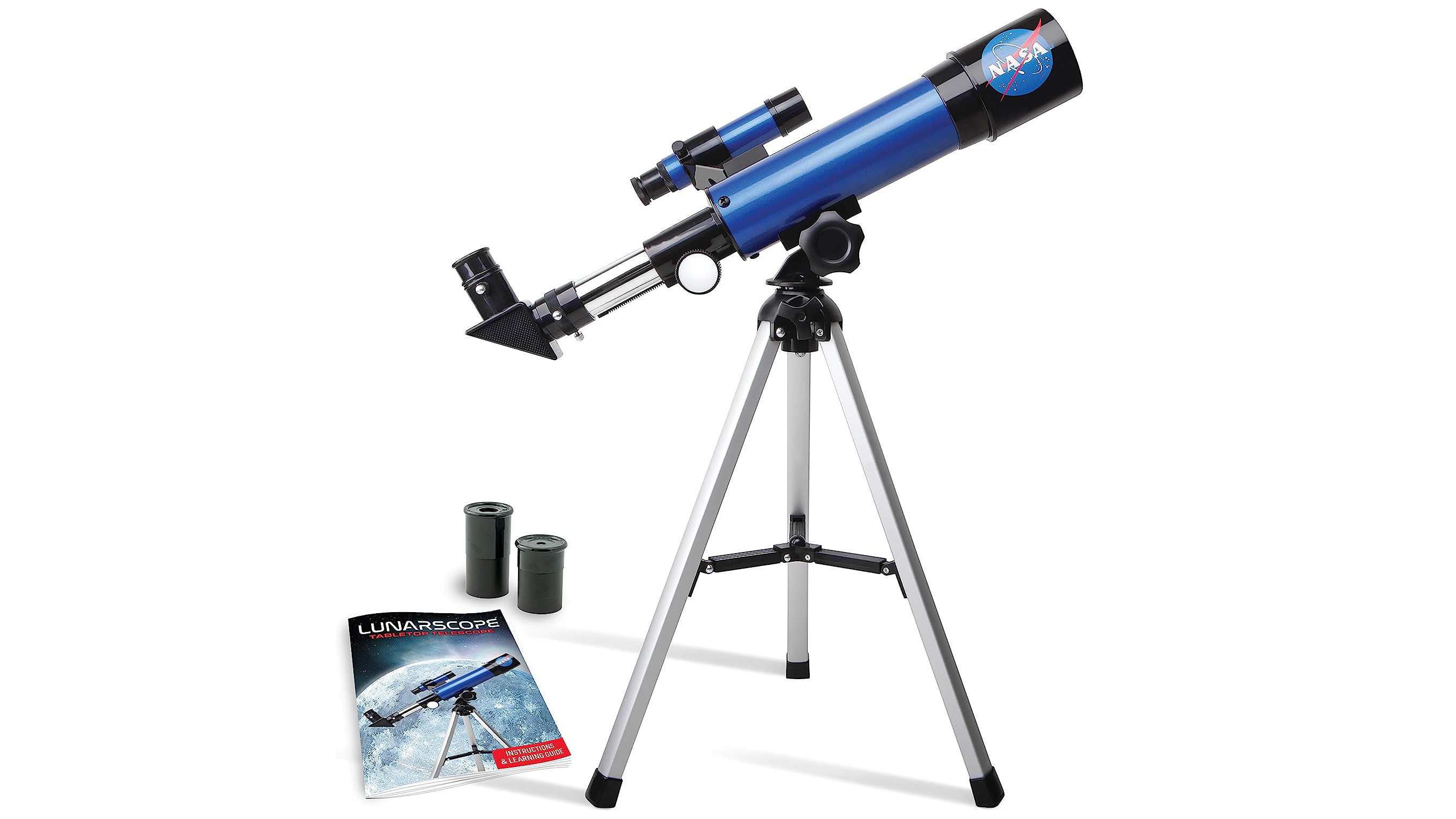
2: NASA Lunar Telescope for Kids
Specifications
Reasons to buy
Reasons to avoid
Despite the NASA branding this isn’t a scope actually made by engineers at the home of the Apollo missions, but it still comes with a lot to interest anyone who’s keen to find out more about the Moon. There are two eyepieces, one for a wider view and another with higher magnification, and a tabletop tripod to keep it supported in use.
There's also a printed guidebook included, full of facts about our nearest neighbor in space and tips for things to look at on its surface. Despite the emphasis on lunar observing, there's nothing stopping you from using this scope for views of the planets or star clusters, though it will do better when trained on brighter objects.
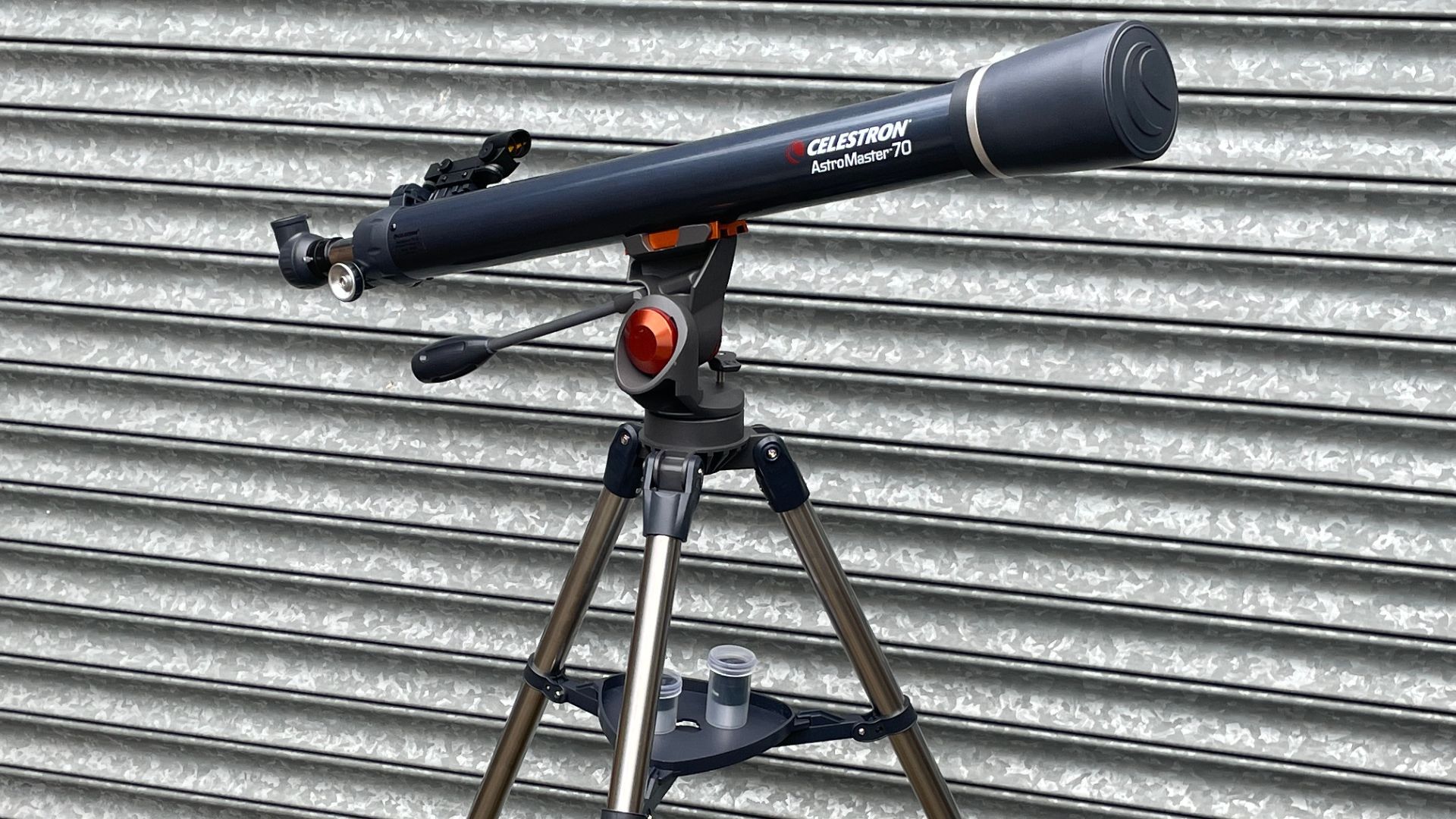
Specifications
Reasons to buy
Reasons to avoid
This refracting telescope is much longer than many of the smaller reflecting telescopes on this list, but also fairly light. It’s a no-frills design that, nonetheless, will reward a bit of work in positioning the tripod and finding a target with well-magnified views of the lunar surface or moons of Jupiter.
As a completely manual scope you’ll need to become adept at positioning and guiding it to find celestial targets, and it comes with a free download of the Starry Night software for Windows or Macs to run on a nearby laptop and help you out. There's also a battery-powered red-dot finderscope that can help you to home in.
See our full Celestron AstroMaster 70AZ review
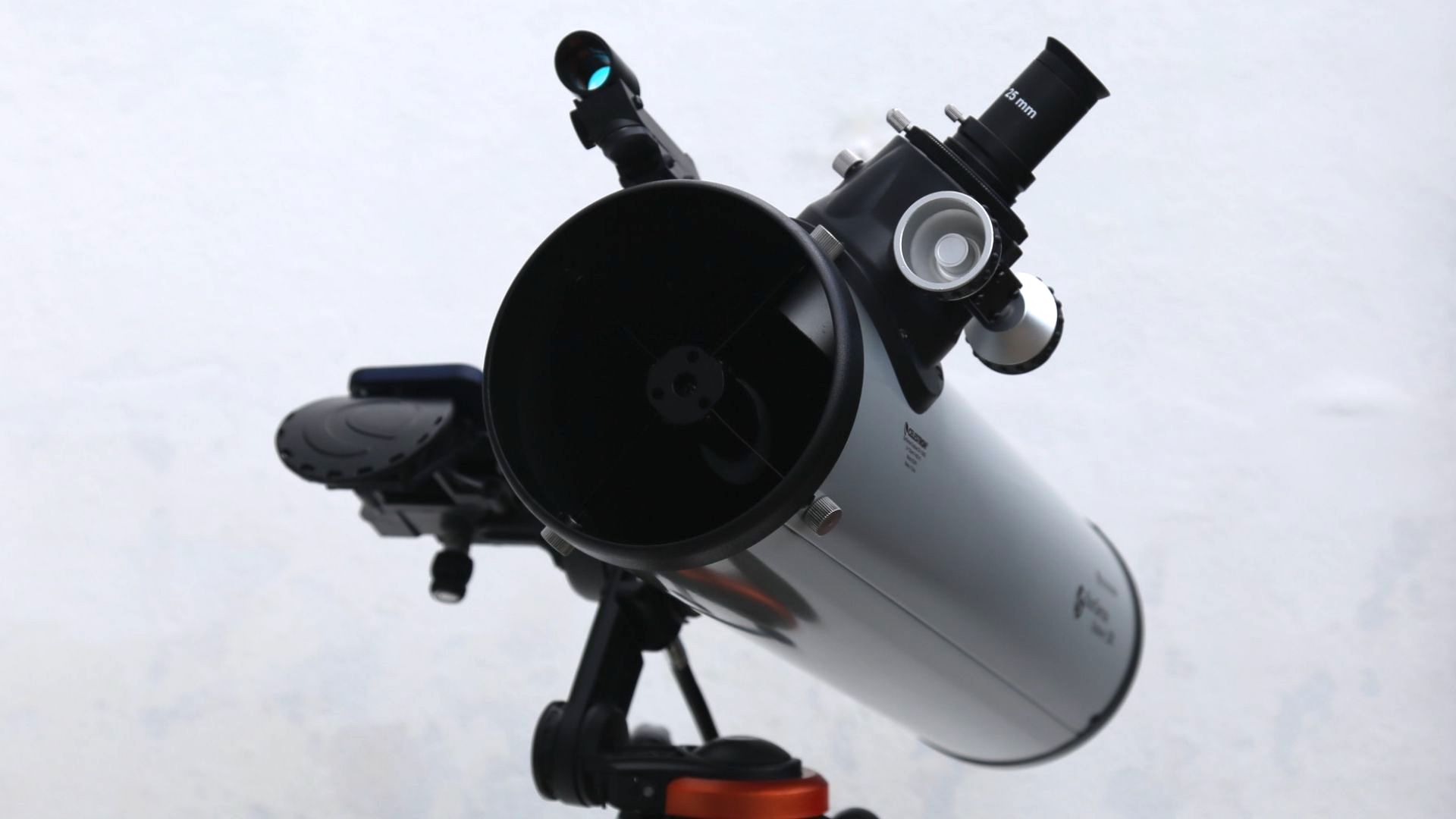
4: Celestron StarSense Explorer DX 130AZ
Specifications
Reasons to buy
Reasons to avoid
Fully guided, or goto, computerized telescopes use motors in their mounts, plus GPS or other knowledge of exactly where they are and a setup process that points them the right way, to automatically find night sky objects for you to observe. They can be really, really expensive though, so Celestron’s StarSense offers a good compromise. Using a smartphone app that’s keyed into the scope’s direction, you can search an astronomical calalog for something to look at, then get guidance arrows on the phone screen telling you where to move the scope.
It’s a clever idea, and attached to this reflecting telescope it makes homing in on planets, galaxies and nebulae easy.
See our full Celestron StarSense Explorer DX 130AZ review
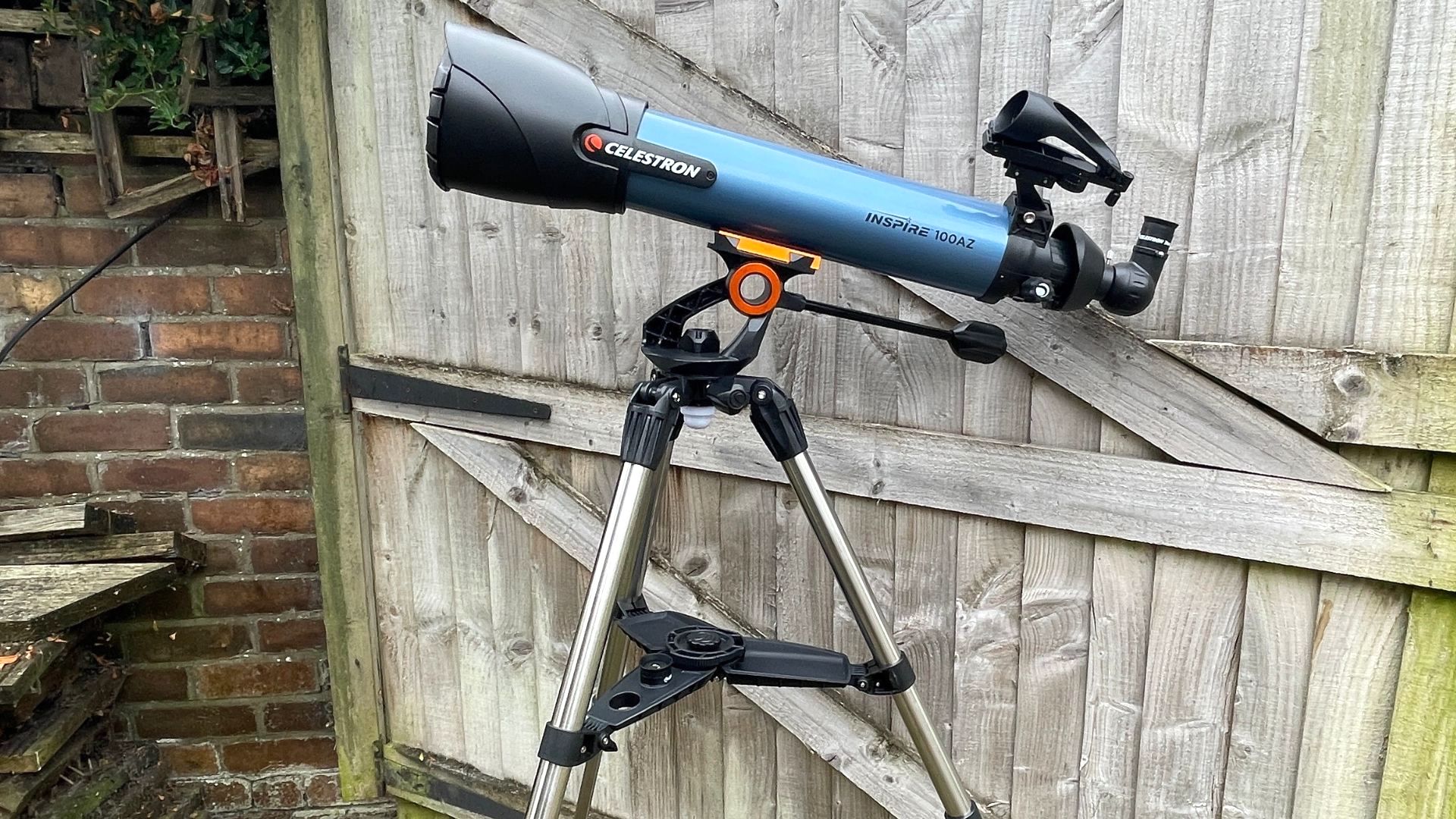
5: Celestron Inspire 100AZ
Specifications
Reasons to buy
Reasons to avoid
Teenagers love their smartphones, so why not combine that obsession with astronomy? This refracting scope from Celestron has everything you’d expect from a night-sky viewing kit, including a tripod, star diagonal so you’re not constantly bending down behind the eyepiece, accessory tray and a finderscope. But it also has a built-in smartphone adapter, allowing you to secure a phone behind the eyepiece and point its camera down the telescope, to view celestial objects on the phone’s screen rather than peering into the eyepiece, and to take photos.
As the night sky moves, and astrophotography often requires long exposures of faint objects such as nebulae, the shots you take are going to be limited by physics, but as a convenient way of viewing things through the scope, and as an introduction to taking photos of the night sky, this is an ideal choice.
See our full Celestron Inspire 100AZ review
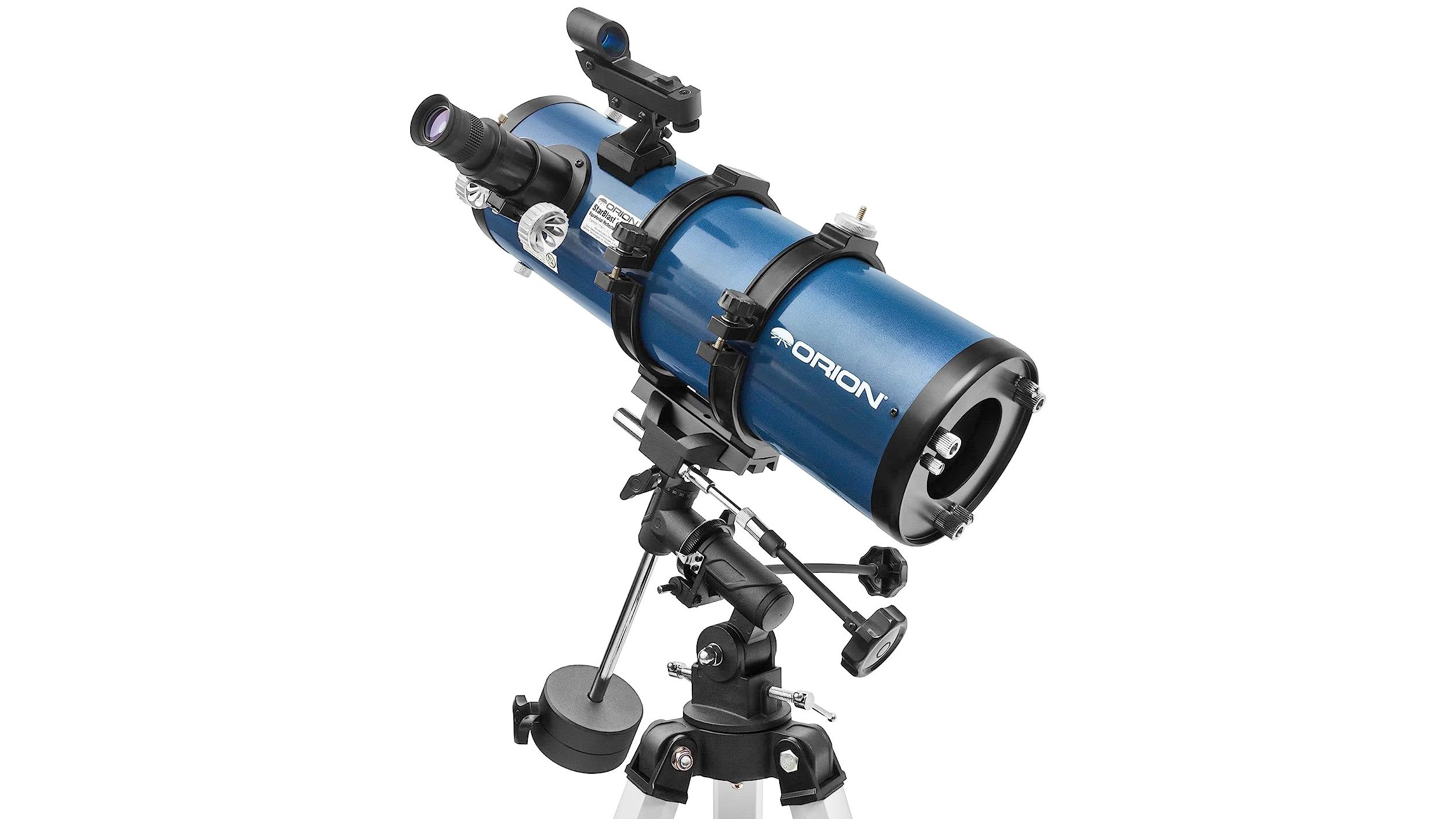
6: Orion StarBlast II
Specifications
Reasons to buy
Reasons to avoid
This is a much more grown-up telescope, a reflector with counterweights, an equatorial mount, a finderscope, and a metal tripod. It’s the sort of thing your kids will be asking for once they’ve outgrown other scopes on this list, and it’s going to need some space both to use and to store, but the results will be worth it.
There's no motorized or computer guidance on this model, but you do get precision controls you can use to adjust the scope’s pointing by fractions of an inch to get your target properly centered in the eyepiece. It’s good for views of the Moon and planets, especially if you shell out for a Barlow lens (the astronomy equivalent of a teleconverter) or an extra eyepiece for even more magnification - this tube should be good for over 200x) and deep sky objects too if you’re away from the light pollution cast by city lights.
How old do you have to be to use a telescope?
You can be any age, as long as you can reach the eyepiece - reflecting telescopes in particular can hoist their eyepieces up in the air, so you might need a chair to stand on. Some aspects of telescope use, such as the distance you need to hold your eye from the eyepiece for the best image and the need to stay up past bedtime, may be lost on younger children, and older ones may better appreciate and understand the sights on offer, but you’re never too young to begin your journey in astronomy.
The recommendations in our guides start from the age of four and up. We have given a rating for age suitability for each - but this is just a rough guide, provided by the manufacturer when possible.
Caution: You should never view the sun directly through a telescope, and this danger does mean that adult supervision is recommended when using these instruments
What are key things in choosing a telescope for kids?
Size and accessibility are the most important things. If it’s a telescope for kids to use on their own, it needs to be small enough for them to handle, and not so far off the ground that they can’t reach the eyepiece. Scopes with wider fields of view are also less frustrating to use, as it becomes easier to find objects to observe with them.
What are the first things for young users to view in the night sky?
The Moon makes a great first target, as it’s close and bright. The lunar surface is crisscrossed with linear features known as rilles, pock-marked with impact craters, and has a good contrast between the brighter uplands and darker maria. Jupiter and its moons, or the rings of Saturn, also make for impressive sights, and if you’re in the northern hemisphere the Andromeda galaxy will blow young minds when you tell them how far away it is and how many stars it contains.
Get the Digital Camera World Newsletter
The best camera deals, reviews, product advice, and unmissable photography news, direct to your inbox!

Ian Evenden has worked for newspapers, magazines, book publishers, and websites during his almost 25 years in journalism, and is never happier than when taking a new piece of expensive technology out of its box. When he's not slaving over a hot keyboard, he lies in wait for wildlife before shooting it with a long camera lens.
